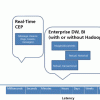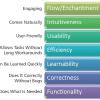Strategic advice to leverage new technologies
Technology is at the heart of nearly every enterprise, enabling new business models and strategies, and serving as the catalyst to industry convergence. Leveraging the right technology can improve business outcomes, providing intelligence and insights that help you make more informed and accurate decisions. From finding patterns in data through data science, to curating relevant insights with data analytics, to the predictive abilities and innumerable applications of AI, to solving challenging business problems with ML, NLP, and knowledge graphs, technology has brought decision-making to a more intelligent level. Keep pace with the technology trends, opportunities, applications, and real-world use cases that will move your organization closer to its transformation and business goals.
Recently Published
Cutter Business Technology Strategies Director Ron Blitstein, Piet Ribbers, and I are working toward a book on the characteristics of successful and effective relationships between IT and business organizations and their managers.
Real-Time CEP, Big Data, and the Cloud
The enterprise Big Data landscape includes various types of data, including historical, transactional, images, and message-based streams. In turn, this data can be structured or unstructured. Importantly, the treatment and analysis of data is different for different types of data (see Figure 1). For example:
In my last Advisor ("Cloud Architecture: Leveraging Strategies, Blueprints, and Roadmaps -- What's Different Today?"), I shared some common chal
The Impact of HTML5 on Enterprise Applications
For the past 20-plus years, the Web has been based on a document-centric model despite recent workarounds to provide enterprise-quality applications.
The Impact of HTML5 on Enterprise Applications
For the past 20-plus years, the Web has been based on a document-centric model, despite recent workarounds to provide enterprise-quality applications, new types of user experiences, and multimedia and real-time capabilities. With a renewed focus on applications, programming interfaces, enhanced graphics, offline behavior, and modern communications, the Web is entering its next phase of life.
The "consumerization of IT" is a name we've given to a new phenomenon. A couple of new edge devices have come on the scene -- smartphones and tablets -- and they are quickly moving from being consumer gadgets to widespread elements in enterprise IT. Employees are bringing them to work and insisting that IT support them, and IT departments have gone from ignoring the devices to trying to regulate them to accepting that they will have to support users who bring their own devices (BYOD).
Consumerization is the trend for new technologies to first emerge in the consumer space and subsequently make their way into the enterprise world. But what exactly is it in the consumer world that is making users demand similar things from enterprise IT? In this article, I will focus on what the consumerization of IT means for enterprise business applications and explore the underlying user motivation for this trend. Before we jump into that, though, I'll provide a little background on what's driving this change.









